
A feral cat feeds on the carcass of a White-capped Albatross Thalassarche steadi on Auckland Island, August 2019; photograph by Stephen Bradley, Department of Conservation o Te Papa Atawhai (read more here)
A fund-raising campaign for the Maukahuka Restoration Project has been launched in new Zealand that aims to make sub-Antarctic Auckland Island free of its estimated 1500 feral pigs, 550-690 feral cats and an unknown number of House Mice. The launch took place on 03 November aboard the Heritage Adventurer of Heritage Expeditions in the city of Auckland's waterfront. The restoration project, set to cost NZ$ 80 million, is a partnership between New Zealand’s Department of Conservation (DOC) as the operational lead, indigenous tribe Ngāi Tahu’s Murihiku Regeneration, Island Conservation (providing technical advice), New Zealand Nature Fund (NZNF) as the fund-raising partner and Heritage Expeditions (which has spent more than 35 years leading scientific and eco-tourism voyages to New Zealand’s subantarctic islands).
At the ship-based launch Lou Sanson, a NZNF Trustee and a former DOC Director-General, proposed that a scheme be instituted whereby project supporters could “purchase” a symbolic hectare of the 46 000-ha island for NZ$1000, with the aim to raise as much as NZ$44 million. “Under the plan, donors would receive a certificate recognising their “ownership” of a hectare of Auckland Island, without any legal title.”

A feral pig on Aukland Island approaches a breeding White-capped Albatross Thalassarche steadi, photograph by Pete McClelland
In a recorded message played at the Auckland Island event, the New Zealand Conservation Minister Tama Potaka said the islands are “among the great wildlife sanctuaries of the Southern Hemisphere. The challenge before us is to restore balance – to let these islands breathe again. Projects like this show how government, iwi [Māori tribes], philanthropy and enterprise can work together for enduring results.”
 Marion Island’s “Sponsor a Hectare” scheme. Each exposed rectangle represents 100 ha funded as at 04 November 2025
Marion Island’s “Sponsor a Hectare” scheme. Each exposed rectangle represents 100 ha funded as at 04 November 2025
The Auckland Island crowd-funding proposal is remarkably similar to the “Sponsor a Hectare” initiative of the Saving Marion Island’s Seabirds: The Mouse-Free Marion (MFM) Project which aims to eradicate the albatross-killing House Mice on South Africa’s sub-Antarctic island. This crowd-funding scheme is working to raise 30 million Rands at a cost of R1000 for each of the islands 30 000 hectares; it is currently standing at 42% of target. It is important to note, that as for the Auckland Island proposal, the Marion Island crowd funder will only raise a part of the total funds required.

John Cooper (second left) proposes Marion Island’s “Sponsor a Hectare” scheme to BirdLife South Africa colleagues back in 2017 (read more here)
When I first proposed the Hectare a Sponsor idea to BirdLife South Africa (which jointly manages the MFM Project with the South African Government’s Department of Forestry, Fisheries and the Environment) I had in mind the “Million Dollar Mouse” public campaign that with DOC and other support, funded the eradication of House Mice on New Zealand’s Antipodes Island. I was particularly taken by the Antipodes Island map that showed progress with fund-raising by crossing out mice.
 X out that mouse! Progress with the Antipodes Island’s Million Dollar Mouse Project funding
X out that mouse! Progress with the Antipodes Island’s Million Dollar Mouse Project funding
The Auckland Islands are a nature reserve and part of the New Zealand Sub-Antarctic Islands World Heritage Site. Removal of the remaining introduced mammals will mean that all the New Zealand’s sub-Antarctic islands will be free of mammalian pests, following successful campaigns on Enderby (cattle, rabbits, mice) Campbell (sheep, cats and rats) and Antipodes (mice). Goats were previously eliminated from Auckland Island.
It seems that civil/government partnerships are the way forward to fund introduced mammal eradications on large islands - as exemplified by Antipodes, Auckland and Marion, as well as earlier on South Georgia (Islas Georgias del Sur)* where the Habitat Restoration Project rid the island of its rodents and the sadly failed attempt by the Gough Island Restoration Programme to eradicate that island’s mice.
Slowly but steadily the islands of the Southern Ocean are being rewilded by the eradication of their introduced pests, thus helping save their threatened albatrosses and petrels, and all their biota. Wearing a different hat as News Correspondent for the Mouse-Free Marion Project, I am grateful that I can do my small part towards this worthy goal.
John Cooper, Emeritus Information Officer, Agreement on the Conservation of Albatrosses and Petrels, 12 November 2025
*A dispute exists between the Governments of Argentina and the United Kingdom of Great Britain and Northern Ireland concerning sovereignty over the Falkland Islands (Islas Malvinas), South Georgia and the South Sandwich Islands (Islas Georgias del Sur y Islas Sandwich del Sur) and the surrounding maritime areas.
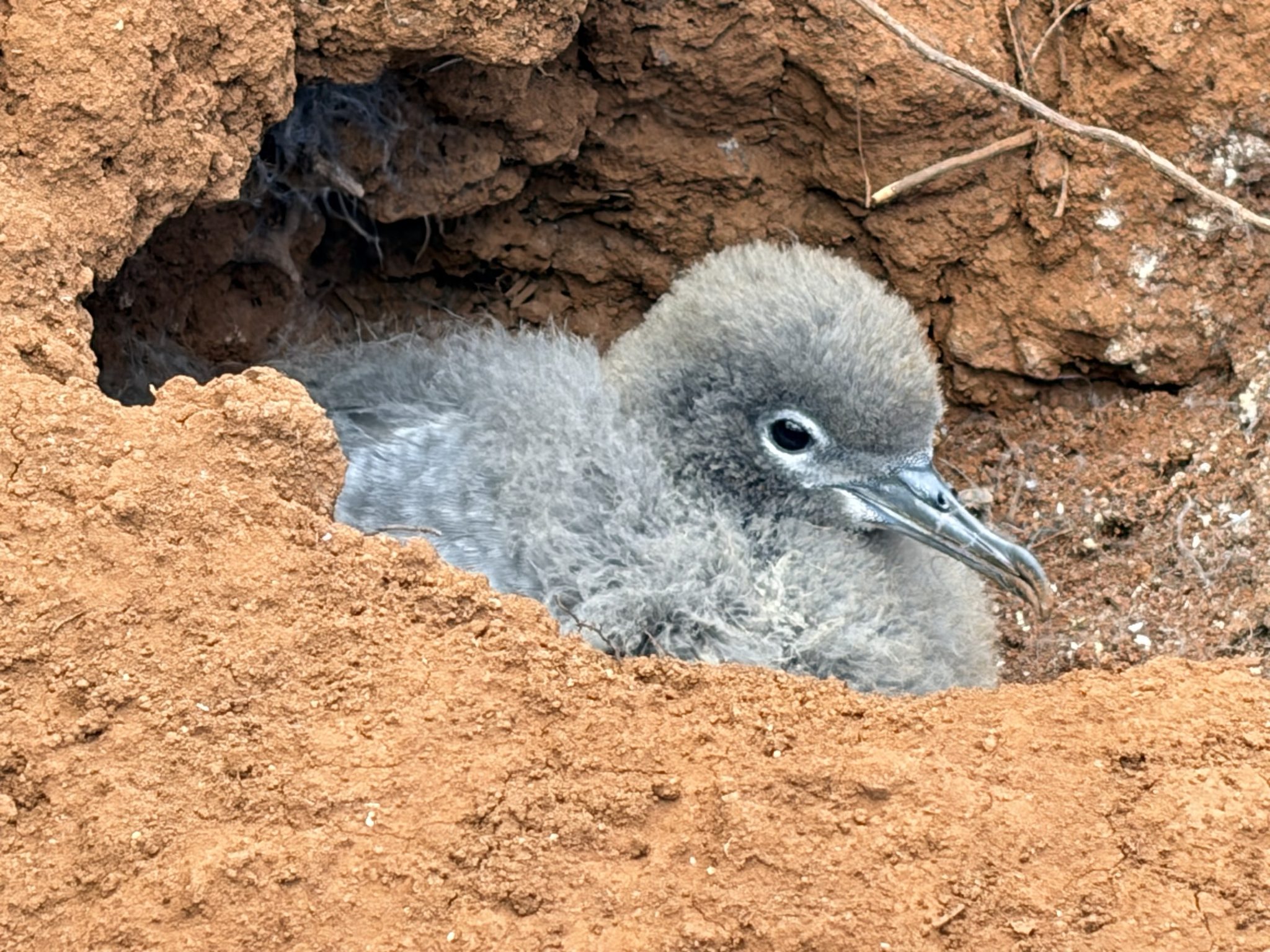 Wedge-tailed Shearwater chick in the Kilauea Point National Wildlife Refuge, photograph from Pacific Rim Conservation
Wedge-tailed Shearwater chick in the Kilauea Point National Wildlife Refuge, photograph from Pacific Rim Conservation![P01[0:0] TT[188] E[080:2272]G[192:0x3c] BV[-1:0] IR[L:L:18] MOE[0:3]](/images/stories/acap/Birds/Shearwaters/Wedge_tailed/Wedge-tailed_feral_pig_4_Pacific_Rim_Conservation.jpg)

 English
English  Français
Français  Español
Español 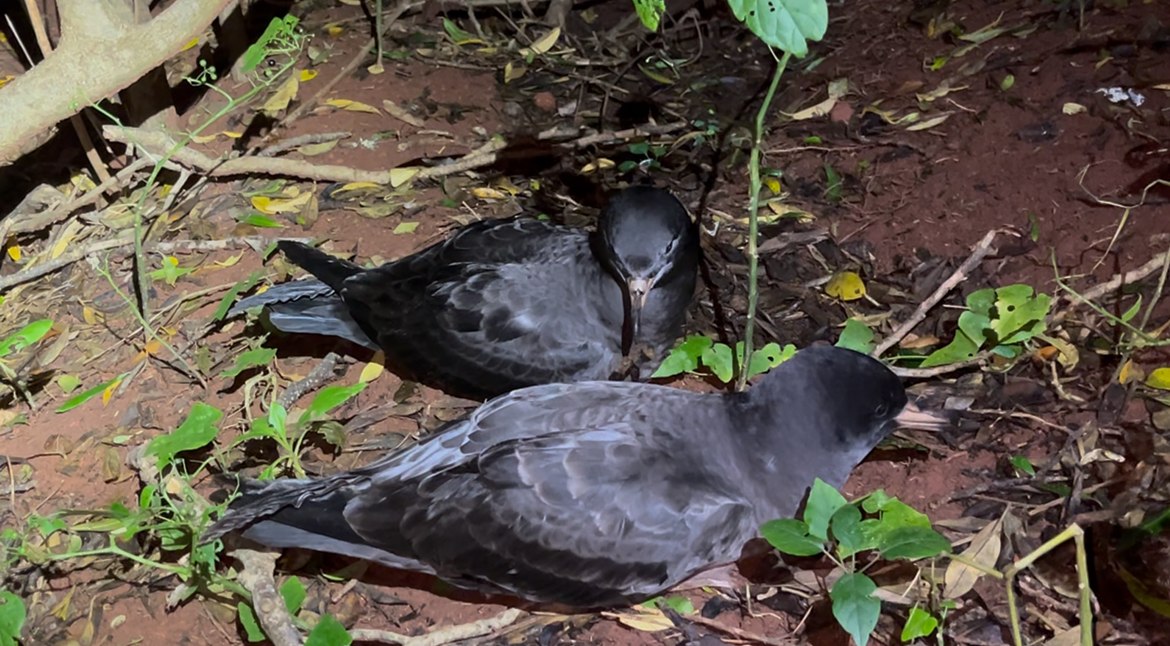
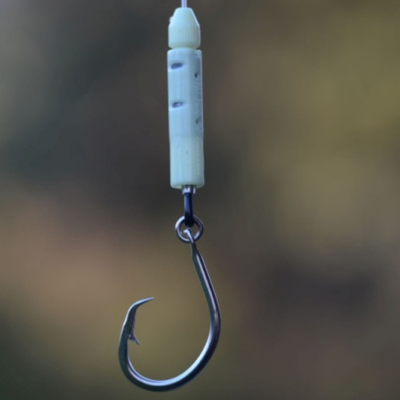 A Lumo Lead®, photograph from the publication
A Lumo Lead®, photograph from the publication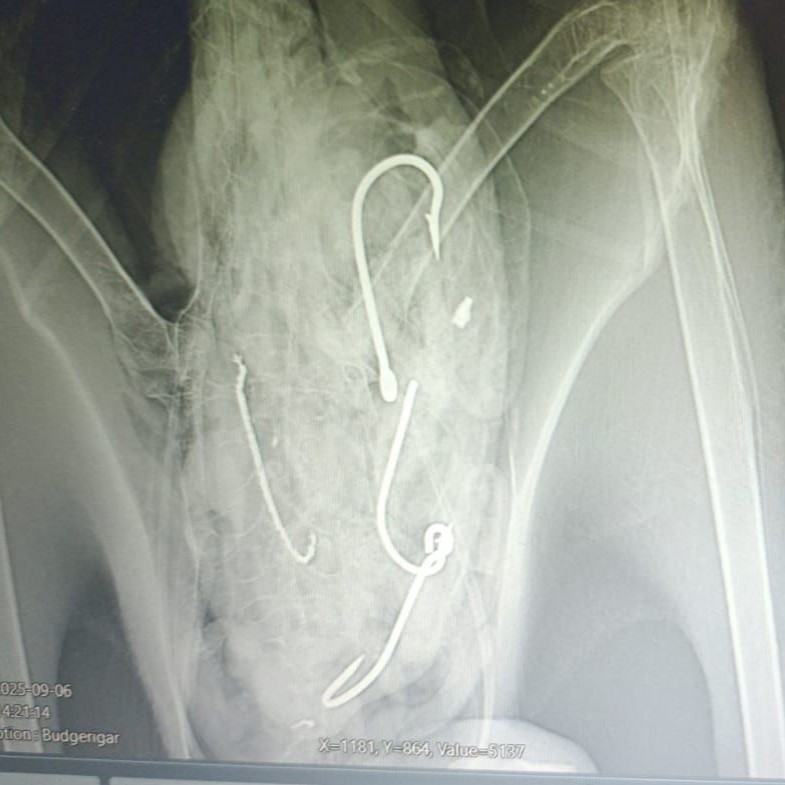 Four fishing hooks and fishing line are visible in this X-ray of a Salvin’s Albatross, photograph by Ruben Aleman, Fundación Juvimar
Four fishing hooks and fishing line are visible in this X-ray of a Salvin’s Albatross, photograph by Ruben Aleman, Fundación Juvimar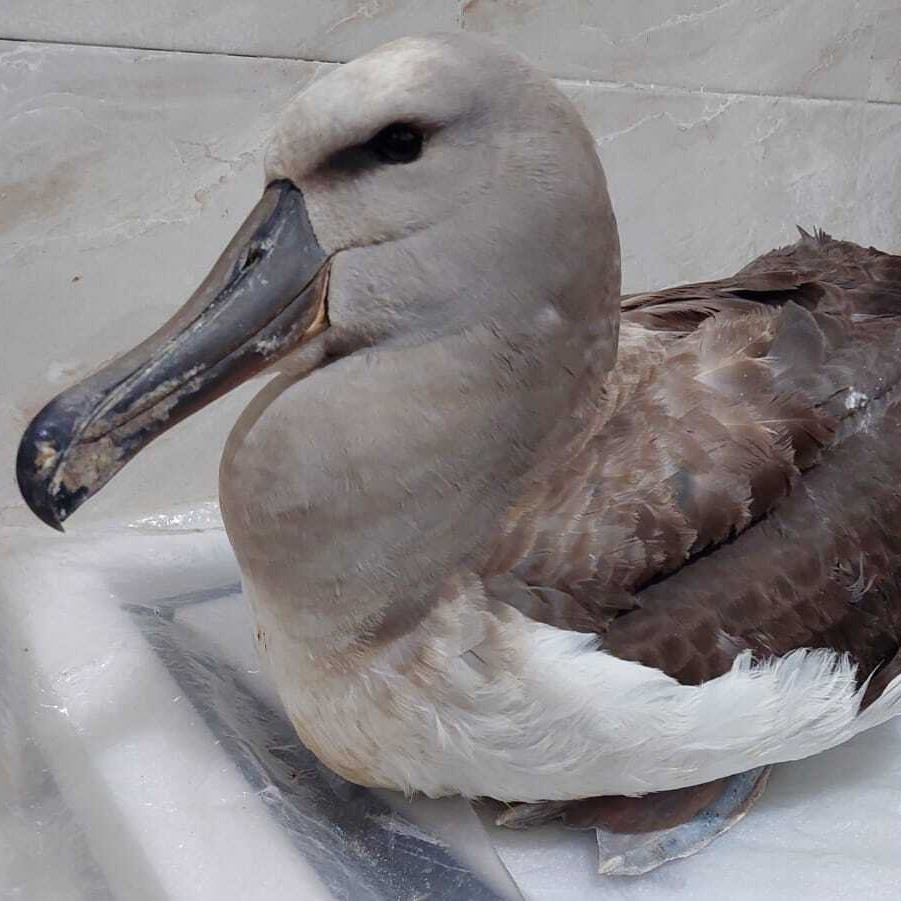
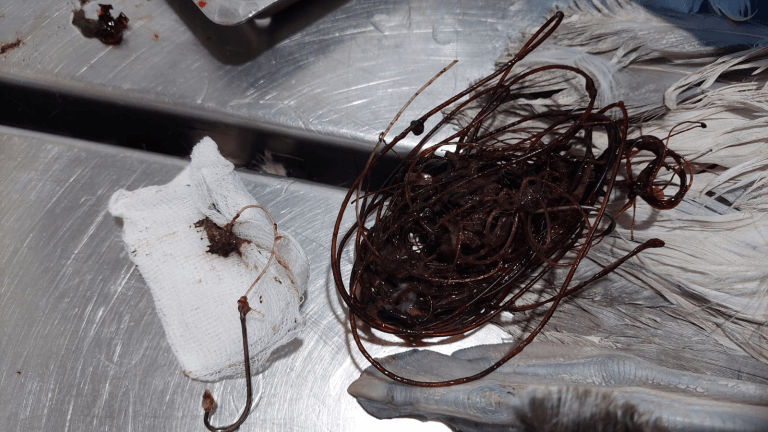 One of the removed hooks and tangled fishing line, photograph by Ruben Aleman, Fundación Juvimar
One of the removed hooks and tangled fishing line, photograph by Ruben Aleman, Fundación Juvimar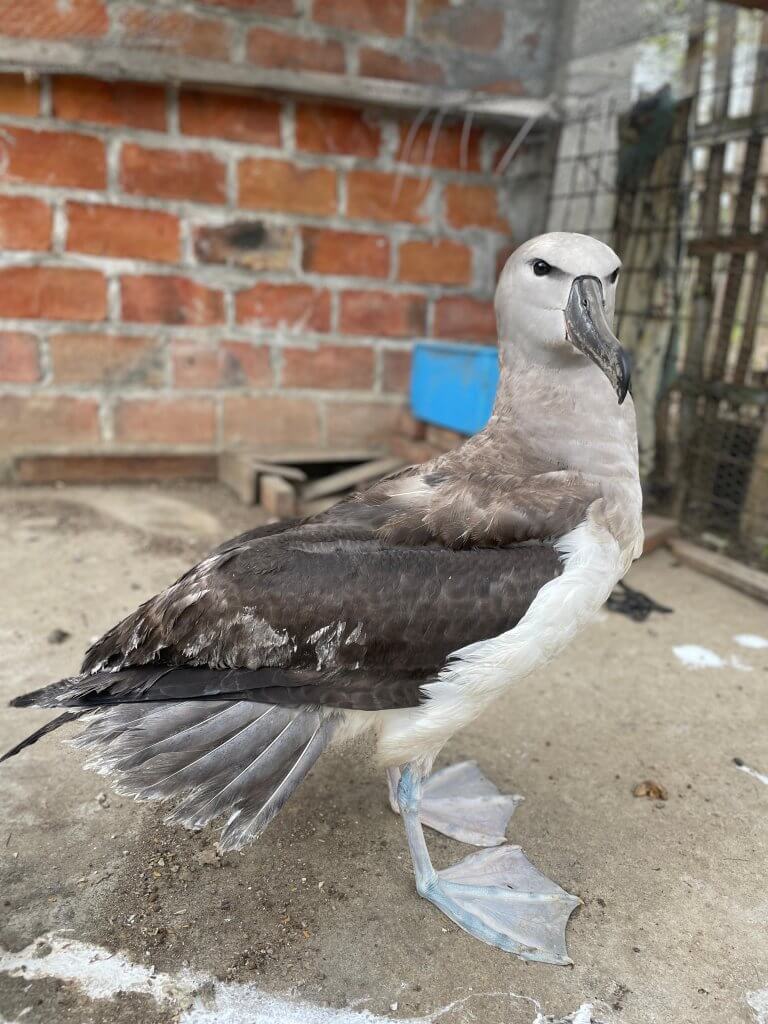 The juvenile Salvin’s Albatross in captivity, photograph by Ruben Aleman, Fundación Juvimar
The juvenile Salvin’s Albatross in captivity, photograph by Ruben Aleman, Fundación Juvimar

 Marion Island’s “Sponsor a Hectare” scheme. Each exposed rectangle represents 100 ha funded as at 04 November 2025
Marion Island’s “Sponsor a Hectare” scheme. Each exposed rectangle represents 100 ha funded as at 04 November 2025
 X out that mouse! Progress with the Antipodes Island’s Million Dollar Mouse Project funding
X out that mouse! Progress with the Antipodes Island’s Million Dollar Mouse Project funding